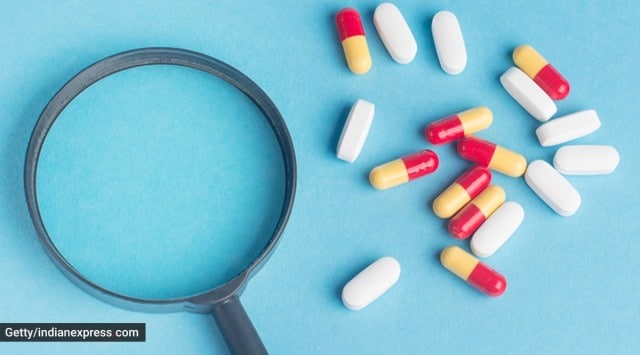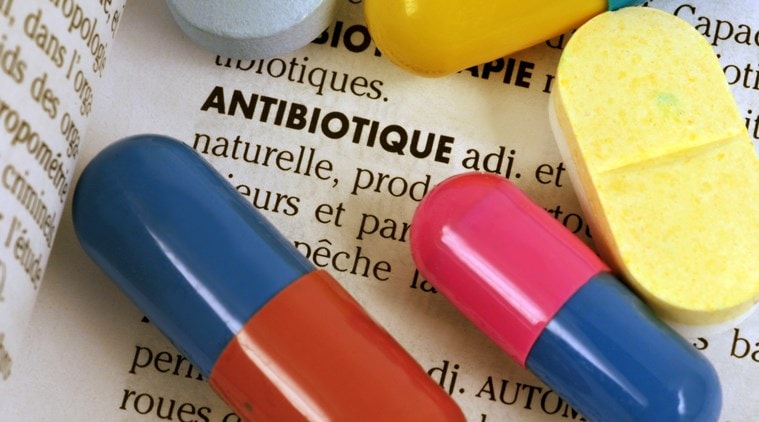- India
- International
Why over-use, non-prescription use of antibiotics is unadvisable
"It is not you or the animal that becomes antibiotic-resistant, it is the bacteria that develop immunity to specific drugs overused to kill it, said Dr Mahesh Lakhe, consultant - Internal Medicine and Infectious Disease, Columbia Asia Hospital, Pune
 Are you taking antibiotics? Here's how it affects the gut (Source: Getty Images/Thinkstock)
Are you taking antibiotics? Here's how it affects the gut (Source: Getty Images/Thinkstock)Antibiotics are one of the most effective way to control a disease substantially. “That, possibly, makes these drugs open to abuse. Over-use and non-prescription use of antibiotics are “dangerous”. Over-the-counter availability of antibiotics have lured people to pop it in even for simple cold, or inject it into the livestock, and lack of adherence to standard procedure and hygiene at the hospitals have promoted the proliferation of antibiotic-resistant strains of bacteria. Yes, it is not you or the animal that becomes antibiotic-resistant, it is the bacteria that develop immunity to specific drugs overused to kill it,” said Dr Mahesh Lakhe, consultant – Internal Medicine and Infectious Disease, Columbia Asia Hospital, Pune.
Polypharmacy or combination therapy may not work always
Combining more than one drug to treat one disease, known as polypharmacy or combination therapy, is common in the treatment of HIV/AIDS, cancer, malaria and tuberculosis. It is one very effective way to fight a particularly stubborn infection as two drugs at once attack it in alternate ways and can disrupt two different parts of the bacteria’s protein-building machinery. Drugs that cooperate are known as “synergistic” and the twin-drug attack not only kills pathogens more effectively but also delays the emergence of resistance. Experiments have shown vanillin, the compound that gives vanilla its distinctive taste, when paired with spectinomycin, originally treated gonorrhea but was abandoned due to the bacteria’s resistance, it helped the antibiotic to enter bacterial cells and inhibit their growth. Paired-up antibiotics are prescribed to fight notoriously resilient infections such as methicillin-resistant Staphylococcus aureus (MRSA).
 Consuming antibiotics when one doesn’t need them speeds up the process of antibiotic resistance. (Photo: Getty Images/Thinkstock)
Consuming antibiotics when one doesn’t need them speeds up the process of antibiotic resistance. (Photo: Getty Images/Thinkstock)
However, vanillin reduced the effect of many other types of antibiotics, such as aspirin. Similar results will be evident if doxycycline (treats bacterial pneumonia, acne, etc.) and erythromycin (used for treating infections of respiratory tract, skin, chlamydia infections, pelvic inflammatory disease, and syphilis) – which are commonly given separately for infections such as Escherichia coli – are administered in different amounts, alone or combined. While in the first day, bacterial growth can plunge by up to 95 per cent, the next day, it has an exponential growth by 500 per cent. The bacteria were found to have widely duplicated genes that provided four different ways to withstand the drugs, using their “efflux pumps” that thrust antibiotics and other intruding chemicals back out of the bacteria. Ironically, it was the combination of antibiotics that helped activate these pumps and facilitated the growth of E. coli by killing good bacteria in the process, agents that may have helped to keep pathogens under check.
Use antibiotics responsibly to prevent resistant mutations
Does this mean we stop combining antibiotics? Certainly no. But it is imperative on part of the healthcare providers and the patients/consumers to be informed before they decide to use antibiotics. Following are a few important steps that the World Health Organization (WHO) recommends to reduce the growth of drug-resistant bacteria:
For health professionals:
∙ Prevent infections by ensuring hands, instruments, and environment are clean.
∙ Only prescribe and dispense antibiotics when they are needed, according to current guidelines.
∙ Talk to your patients about how to take antibiotics correctly, antibiotic resistance and the dangers of misuse.
∙ Talk to your patients about preventing infections (for example, vaccination, hand washing, safer sex, and covering nose and mouth when sneezing).
∙ Report antibiotic-resistant infections to surveillance teams.
For patients and individuals:

∙ Only use antibiotics when prescribed by a certified health professional. Always follow your doctor’s advice on using antibiotics. Let the doctor decide if you need antibiotics.
∙ Never share or use leftover antibiotics.
∙ Prevent infections by regularly washing hands, avoiding close contact with sick people, practising safer sex, and keeping vaccinations up to date.
∙ Prepare food hygienically, following the WHO Five Keys to Safer Food (keep clean, separate raw and cooked, cook thoroughly, keep food at safe temperatures, use safe water and raw materials).
∙ Choose foods (vegetables or animal/dairy protein) that have been produced without the use of antibiotics for growth promotion or disease prevention in healthy animals.
∙ If you keep livestock, vaccinate animals to reduce the need for antibiotics and use alternatives to antibiotics when available.
∙ Improve biosecurity on farms and prevent infections through improved hygiene and animal welfare.
May 05: Latest News
- 01
- 02
- 03
- 04
- 05
























